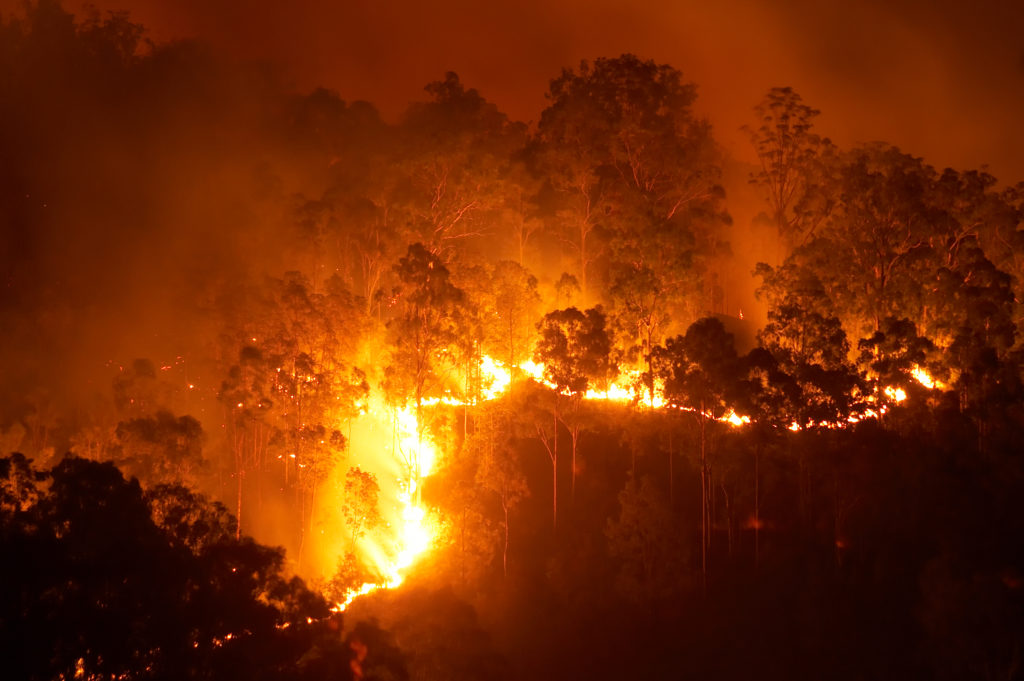Unveiling the Risks: Why Every Homeowner Demands a Bushfire Risk Assessment
Unveiling the Risks: Why Every Homeowner Demands a Bushfire Risk Assessment
Blog Article
Crucial Tips for Bushfire Monitoring to Guarantee Fire Defense

Comprehending Bushfire Danger Levels
Comprehending the varying levels of bushfire risk is crucial for reliable preparation and preparation in mitigating prospective threats to homes and lives. Bushfire risk levels are commonly classified based on variables such as climate condition, gas schedule, topography, and historical fire actions. By comprehending these danger degrees, areas and individuals can proactively apply approaches to decrease susceptability and boost durability in the face of potential bushfire occasions.
The very first degree of bushfire risk is reduced threat, where the probability of a bushfire happening and causing significant damage is marginal. Risky degrees indicate a considerable threat, with problems favorable to fast fire spread and extreme fire behavior.
Understanding these bushfire danger levels allows stakeholders to customize their readiness and feedback activities accordingly, making certain a efficient and proactive approach to bushfire management.
Creating a Defensible Area
Reliable bushfire administration starts with developing a defensible room around buildings to improve security versus possible fire threats. A defensible room is a buffer area that creates a barrier in between a framework and the surrounding combustible greenery. This space functions as a vital line of protection, providing firemens a safe area to run and assisting to reduce the risk of a fire infecting the home.
When developing a defensible area, it is vital to take into consideration the format of the residential property and the bordering landscape. Clearing plants, specifically very combustible plants, within a certain span of the building can assist protect against the rapid spread of fires. In addition, maintaining a well-irrigated area around the property can even more enhance its defensibility.
Regular maintenance of the defensible room is crucial to ensure its performance. This includes cutting overhanging branches, getting rid of dead vegetation, and maintaining the location without debris. By investing effort and time right into developing and preserving a defensible room, homeowner can significantly enhance their possibilities of shielding their homes and possessions during a bushfire.
Executing Fire-Resistant Landscape Design
When developing landscapes to mitigate the danger of bushfires, incorporating fire-resistant components is important for improving home protection and lowering fire risks. Select plants with high moisture material, reduced oil material, and marginal dead greenery to reduce the danger of fire spread.

Creating an Emergency Discharge Plan
Creating an extensive emergency situation emptying strategy is essential for guaranteeing the safety and security and well-being of people throughout possible bushfire incidents (BMP). An effective emptying strategy need to describe clear procedures to follow in the occasion of a bushfire threat, consisting of marked discharge courses, assembly points, and communication procedures
To start developing an emergency situation evacuation plan, it is essential to evaluate the certain dangers and susceptabilities of your area. Recognize numerous discharge routes that lead to safe areas away from the fire, thinking about elements such as terrain, roadway access, and possible hazards. Develop interaction networks to sharp citizens of an upcoming emptying, using techniques such as sirens, text signals, or door-to-door alerts.
Regularly review and exercise the discharge plan with all locals or neighborhood members to guarantee everybody comprehends their responsibilities and roles. Conduct drills to check the efficiency of the plan and make any essential changes. By having a well-prepared discharge strategy in area, you can boost the possibilities of a risk-free and organized discharge during a bushfire emergency situation.
Preserving Fire Security Devices
After establishing an extensive emergency discharge prepare for bushfire cases, it is imperative to prioritize the regular upkeep of fire security equipment to make certain ideal performance and preparedness. Normal upkeep of fire security equipment such as fire extinguishers, smoke alarm, emergency alarm, and automatic sprinkler is critical in securing lives and building during a bushfire. Performing routine examinations, testing, and maintenance of these tools by qualified specialists is necessary to assure they are in working order when required.
Fire BAL Report extinguishers ought to be inspected consistently for pressure levels, noticeable damage, and proper performance. By vigilantly keeping fire safety tools, people can boost their preparedness and reaction capabilities in the event of a bushfire.
Conclusion
In verdict, effective bushfire administration involves recognizing danger levels, producing defensible spaces, executing fire-resistant landscaping, creating discharge plans, and maintaining fire security tools. By following these necessary pointers, individuals can make sure far better fire security and safety for their neighborhoods and buildings. It is necessary to prioritize positive procedures to alleviate the risks connected with bushfires and to be prepared for emergency situations.
By comprehending the subtleties of bushfire risk degrees, creating defensible spaces, executing fireproof landscape design, producing thorough discharge strategies, and making certain the maintenance of fire security equipment, individuals and communities can significantly reinforce their durability against the ravages of wildfires - BAL Report. These tips are not only crucial for guarding against instant fire hazards but likewise for promoting long-term fire defense strategies that can make a considerable distinction in the face of rising bushfire dangers
Risky levels indicate a substantial risk, with problems favorable to fast fire spread and extreme fire habits. Routine upkeep of fire safety and security devices such as fire extinguishers, smoke detectors, fire alarm systems, and lawn sprinkler systems is critical in guarding lives and residential property throughout a bushfire.In final thought, reliable bushfire monitoring involves recognizing danger levels, developing defensible areas, implementing fireproof landscaping, developing discharge strategies, and keeping fire security tools.
Report this page